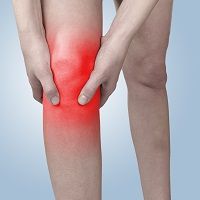Article
'Water on the Knee' May Signal Lyme Disease
Author(s):
Spontaneous knee effusion, often referred to as ‘water on the knee,' is definitely a red flag. However, a new study warns that a swollen knee accompanied by pain could be an early symptom of potentially debilitating Lyme disease.

Spontaneous knee effusion, often referred to as ‘water on the knee,’ is definitely a red flag. However, a new study warns that a swollen knee accompanied by pain could be an early symptom of potentially debilitating Lyme disease.
Lyme disease is caused by the bacterium Borrelia burgdorferi and transmitted from blacklegged ticks to humans. About 70 to 80% of patients will show early symptoms of the disease such as fever, chills, muscle aches, and bull’s-eye shaped rash within the first 30 days of infection. Later common signs include severe headaches, nerve pain, short-term memory problems, and irregular heartbeat. As it turns out, water on the knee may be added to the list of early symptoms.
Lead author Elizabeth Matzkin, MD, and colleagues reported the correlation between Lyme disease and water on the knee in the Journal of the American Academy of Orthopaedic Surgeons (AAOS).
“It is important to catch and treat Lyme disease early because the symptoms get progressively worse over time. However, the lab tests used to diagnose Lyme disease can take time to process, and there are certain circumstances in which immediate antibiotic treatment may be recommended before the lab results are complete,” Matzkin, an assistant professor of orthopaedic surgery at Harvard Medical School, said in a new release.
Lyme disease is diagnosed with a two-tier blood test. With an early diagnosis, antibiotics will work in 99% of patients and the success rate drops to 90% for those diagnosed later on. However, 60% of patients who are not treated for the condition end up developing Lyme arthritis. In severe cases, permanent joint damage can occur.
“Half of patients do not recall a tick bite or observe a rash, and early symptoms are not always detected when a physician diagnoses a knee effusion,” Matzkin continued.
The authors emphasized that symptoms present for less than two weeks can result in a negative test, and patients may need to be tested again after that period.
“One of the most notable differentiating factors is, while septic or arthritis knees usually come with significant pain, knee effusions caused by Lyme disease are often very large, not activity-related, and mostly pain-free,” Matzkin explained.
Physicians may want to keep this finding on their radar and not take water on the knee at face value.


























